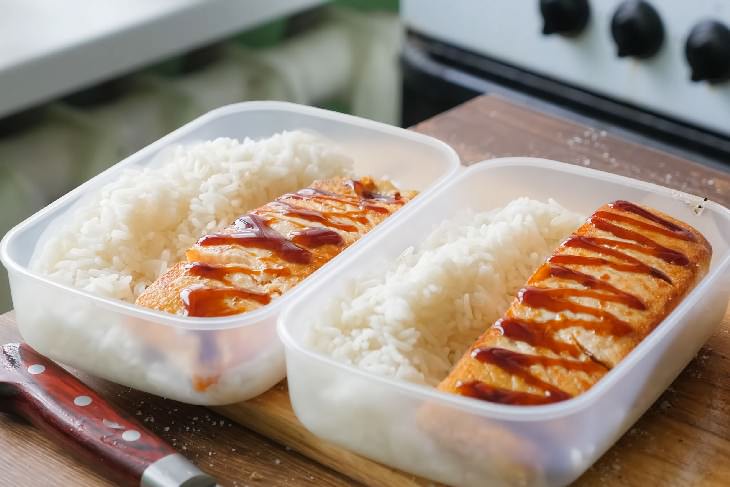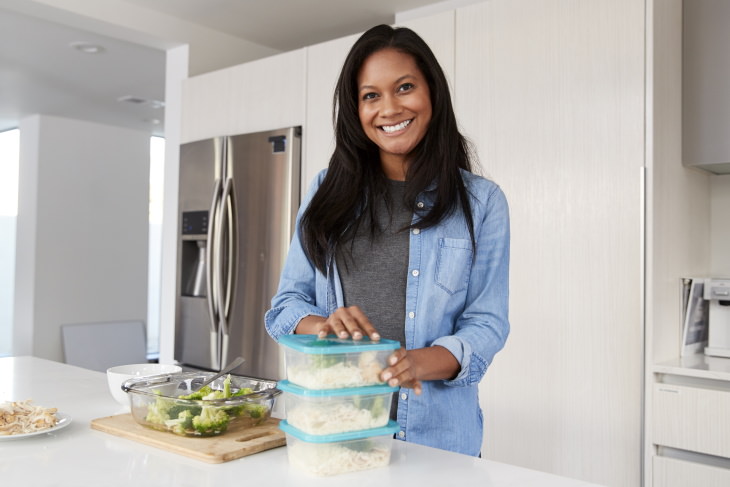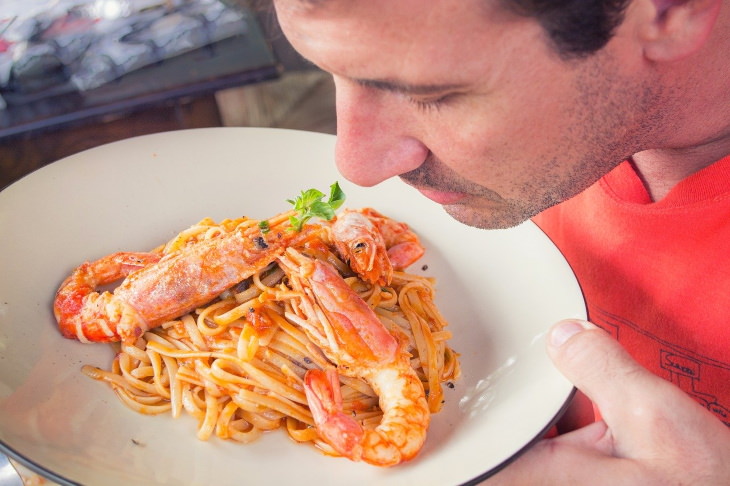Which Foods Spoil Faster and Which Last Longer?
The period of time a specific type of food can safely be kept in the fridge and eaten will depend on a variety of factors. While some foods can be safely stored for days, others are more prone to harboring germs and have to be eaten within a day. Preparation also makes a big difference.
Meals that feature a mixture of different foods, like stews, will only last as long as the ingredient with the shortest shelf life. Restaurant leftovers should be typically eaten within 3-4 days, as it's difficult to access the freshness of the ingredients used, with the exception of dishes that contain raw fish that should be eaten within 24 hours.
It’s important to note that some foods will still taste good after the specified time we mention, but this doesn’t mean the food isn’t spoiled, as the process of decay and the spread of bacteria may not show immediately. In terms of their lasting potential, all foods can be divided into 3 main groups:
1. Low-risk foods. Things like bread, vegetables, and fruit can be stored in the refrigerator up to 7 days before they go bad. More specifically, bread and foods that are dough-based, like a simple cheese pizza, will stay fresh for 5-7 days, but you must make sure to wrap it thoroughly in plastic or put it in a resealable container to prevent it from drying out.
Fresh fruit and vegetables that have been cut up previously also have a long shelf life - 3-5 days, but things like cucumber, watermelon, tomatoes, and other high-water-content fruit and veggies will typically spoil a bit faster. Store these foods in a sealable bag or container to keep them fresher for longer. Cooked canned or fresh veggies and fruit will likewise stay fresh from 3 to 5 days.
2. Medium-risk foods include most, but not all, cooked grains, like pasta, quinoa, and buckwheat. These will typically stay fresh for about 3 days, and you can also freeze them to extend their shelf life by up to 3 months. Desserts and sweets, like cake and pie, will also typically last for about 3-4 days when refrigerated properly.
3. High-risk foods are those that require special care when refrigerated, and will typically not last for more than 3 days. There are several categories of foods on this list, here are the main ones:

- Cooked rice is probably one of the most surprising high-risk food. Rice should be stored very carefully because it commonly harbors Bacillus cereus, a dangerous foodborne pathogen. This is why you should refrigerate rice no more than 1 hour after cooking and eat it within 3 days. Learn more about cooked rice storage, read our previous article titled Is It Safe to Eat Reheated Rice?
- Meat and poultry are also prone to harboring various pathogens, so be careful when storing cooked meat or poultry. Steaks, roasts, whole birds, and chops should be eaten within 3 days. Foods made of ground beef or poultry like cutlets, lasagna, and pasta sauce spoil even quicker - after just 1-2 days. Though it may take longer, nutritionists also suggest to always thaw ground and whole meats in the fridge, and never on the kitchen counter to prevent the spread of pathogens.
- Eggs and seafood are also high-risk foods, as both can harbor Salmonella and other pathogens. Cooked eggs and egg salad should be eaten within a day, with the exception of unpeeled boiled eggs, which can stay fresh up to a week. Cooked seafood and fish dishes should be eaten within 3 days, but raw fish and seafood meals, like sushi, should be eaten immediately or kept in the fridge for up to 24 hours.
- Soups, stir-frys, and stews that contain meat or fish will usually stay fresh for 3-4 days, but they should be put in the fridge as soon as possible, ideally no longer than 2-3 hours after cooking. If you find it difficult to cool them fast, simply put the pot containing the dish into an ice bath - a sink or large bowl full of cold water and ice - and stir continuously until the food reaches room temperature and can be put in the fridge.
How Do I Know My Food Has Gone Bad?
Your nose is one of the best tools you can use to access your food’s freshness. If the food smells sour or just off, don’t take any chances and just throw it away. Other pointers to look out for are a change of color, as it is the case with guacamole that tends to turn brown and will no longer be enjoyable to eat. Vegetables, fruit, and greens, may also start browning on the edges, whereas meat and seafood can become slimy and sticky to the touch when it goes bad.
Mold of any kind is also a surefire sign that it’s time to toss the food in the trashcan. Lastly, if you happen to reheat the food and take a bite only to realize the taste is stale, rancid, or sour, avoid eating it as well.
To prevent food from spoiling and extend their shelf life, follow these useful tips:
1. Refrigerate leftovers within 1-2 hours maximum. Keeping foods at room temperature for a long time is a very bad idea, as bacteria and other pathogens thrive at temperatures between 40°F (4°C) and 140°F (60°C). If you're outdoors and the temperature is above 90°F (32°C), you need to put things in the fridge even quicker - no more than 1 hour.
2. Store in shallow containers. Food in shallow containers will cool off quicker and more evenly than in tall ones, so opt for shallow ones. US food storage guidelines also recommend avoiding stacking more than 2 containers on top of one another because this may slow down the registration speed of the middle containers. Lastly, opt for sealable clear containers, jars, or bag, so that you can see which foods you have in the fridge clearly.
Sealing is important to extend freshness and prevent germs from getting in or out of the container. Note that this also means you'll have to transfer improperly packaged foods you got from a takeaway menu or brought from a restaurant.
3. Take advantage of the freezer. Refrigerating foods isn't the best method of preserving food for a long time, as the temperature in the fridge isn't low enough. To extend the shelf life of ready-made foods, soup, bread, and cooked meat included, you can put them in the freezer. Most leftover foods will be safe to eat even after 3 months of being in the freezer! One thing to consider when freezing foods, however, is properly sealed packaging (see the point above) to prevent freezer burn.
4. Whenever possible, store different foods separately. For example, keep rice, a side dish, in a separate container from stewed vegetables or seafood. This way, if one of the foods goes bad, you’ll be still able to utilize the rest.
5. When reheating food, bring them to more than 165°F (74°C) to kill any germs that may have survived in the refrigeration. It is known that some foodborne pathogens, such as Listeria monocytogene can survive cold temperatures. If possible, you can even bring some foods to a boil, especially liquids, e.g. soups, sauces, and gravies, before eating.
Found this article useful? Don't forget to share it with your friends






